Traffic Testing Results and Analysis
Embedded Strain Gauge
The tensile strain at joint TT34 steadily increased throughout the trafficking period. At the start of trafficking, joint TT34 had a residual strain average response value of approximately 1055 microstrain. This data point was excluded from analysis due to the first wander being performed during between 11:30 AM and 12:30 PM as opposed to the remaining wanders that were performed overnight. The difference in temperatures throughout the pavement sublayer was the reason for excluding the data point. The residual strain values in each embedded strain gauge could be from movements during construction, prior trafficking, and exposure to the environment. At the start of trafficking there was a sudden drop in tensile strength to 197.2 microstrain. Throughout the remainder of trafficking, the HMA overlay experienced a maximum tensile strain of 850.3 microstrain. Except for the first wander on 4 March 2022, there was an overall increase in tensile strain of 653.1 microstrain. TT34-EG8-3 measured lower tensile strength at the start of each day of trafficking and increased in tensile strength while trafficked. The fluctuation between trafficking could be the result of temperature changes experienced throughout the course of the day. From the response measurements, TT34-EG8-3 showed increasing tensile strain measurement until pass 3139 (occurring on the sixth day of trafficking). For trafficking performed on days 6 through 8, the average tensile strength was lower than the previous 3 days. These strain irregularities could indicate potential cracking at this location.
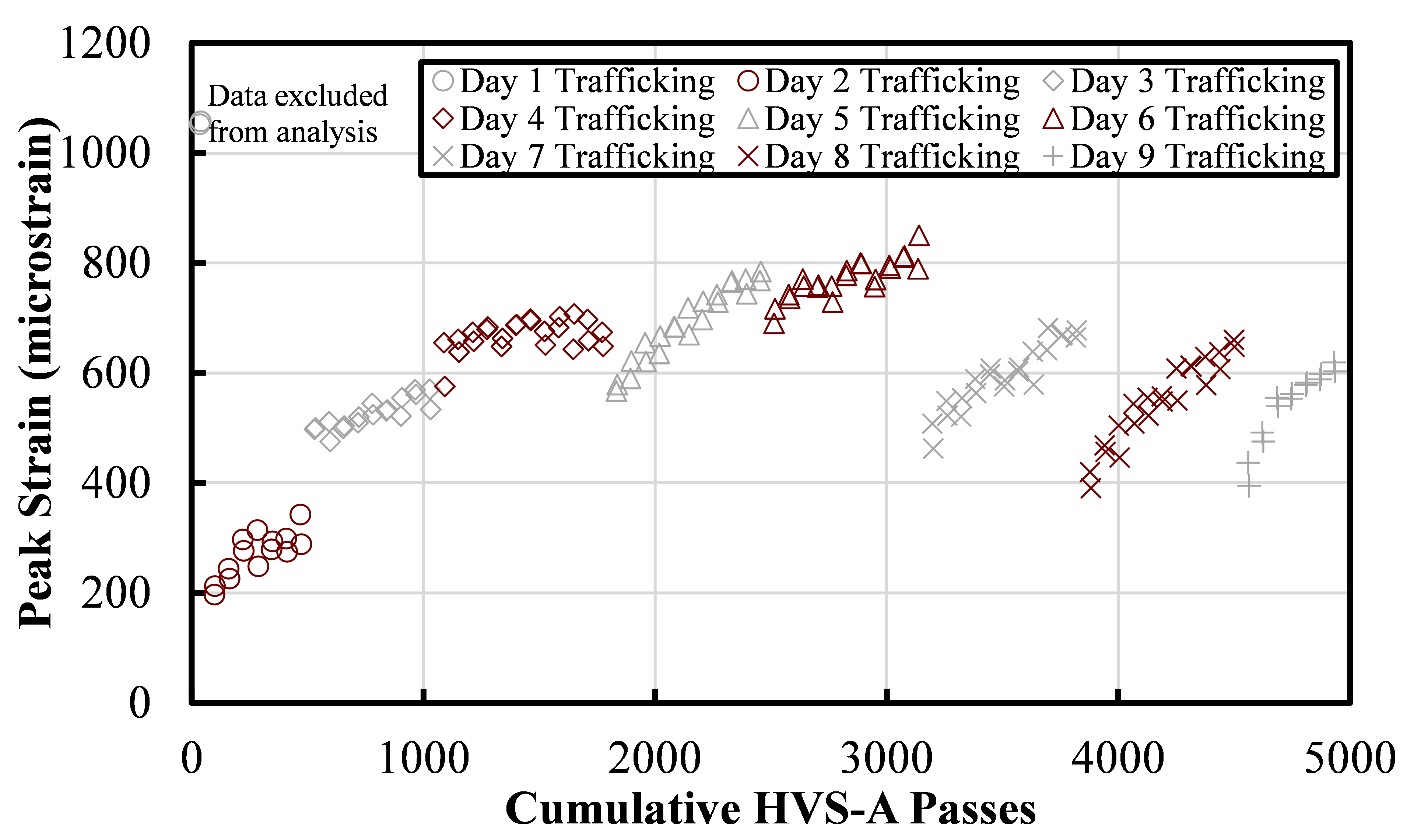
However, cracking was not visually observed on the surface of the HMA overlay at this location. No surface strain gauge (at the centerline of the pavement) had shown a response that would indicate the presence of cracking. Data was normalized by the values obtained during the first wander. For all joints the difference in peak strain was negative, indicating that the center of the joints was in compression. Therefore, considering the embedded and surface strain gauge responses, either (i) the crack had initiated but not reached the surface or (ii) the embedded strain gauge became damaged and provided erroneous response readings.
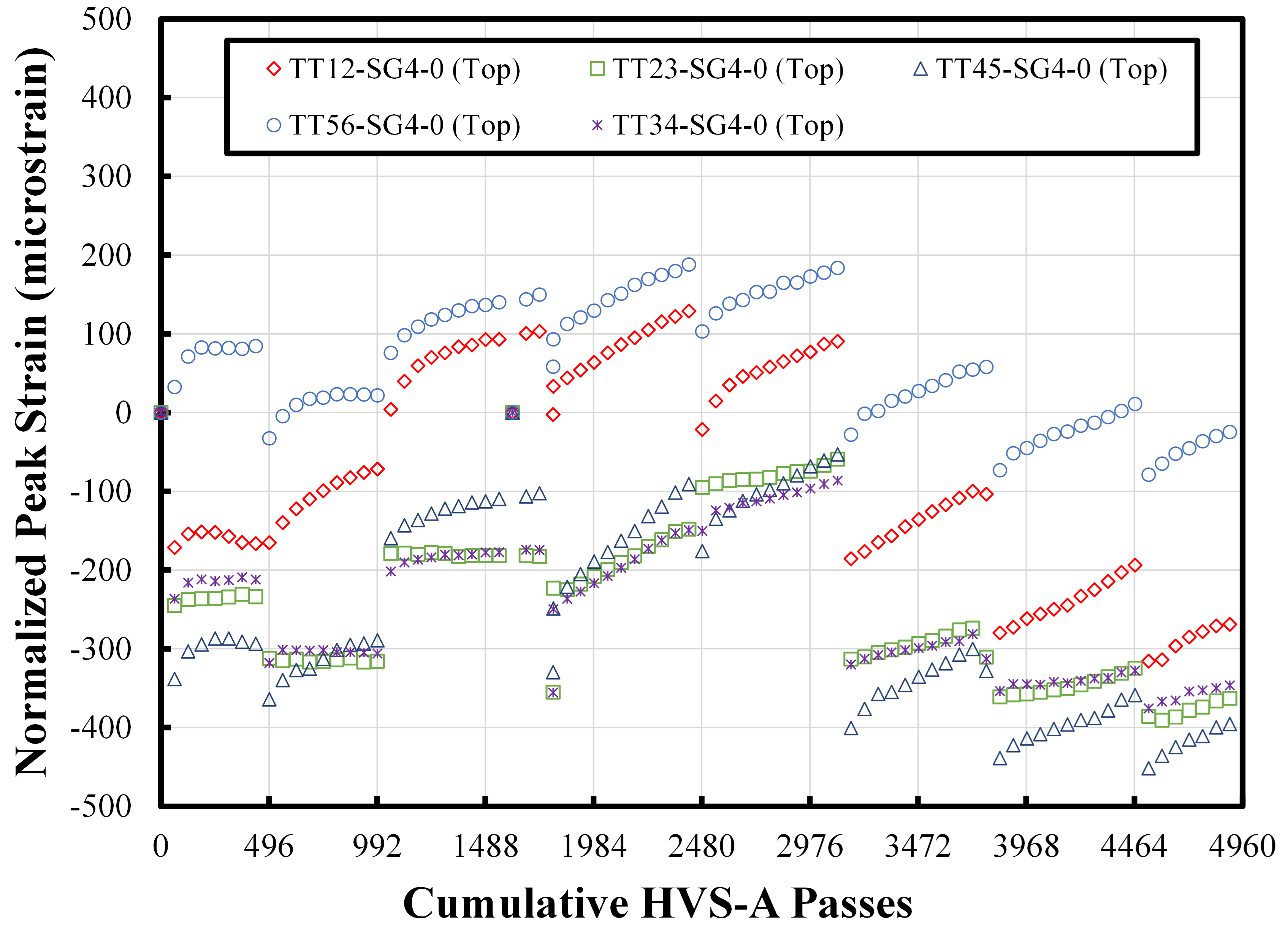
Surface Strain Gauge Response along P-401 Overlay Edge
After normalizing the data, the Phase II trend for undoweled joints (TT23, TT34, and TT45) top, middle, and bottom strain values converging while subjected to airfield traffic was not observed during Phase III (Appendix B). The undoweled surface strain gauges did show that the bottom strain gauge was in compression while the top and middle strain gauges were in tension, similar Phase II. The overall change in East edge TT23 strain measurements for top, middle, and bottom strain gauges were 1268.6, 391.1, and -314.6 microstrain, respectively. On the other hand, the doweled joints (TT12 and TT56) remained relatively consistent throughout the trafficking period. The overall change in East edge TT23 strain measurements for top, middle, and bottom strain gauges were -1309.7, 691.8, and -646.8 microstrain, respectively.
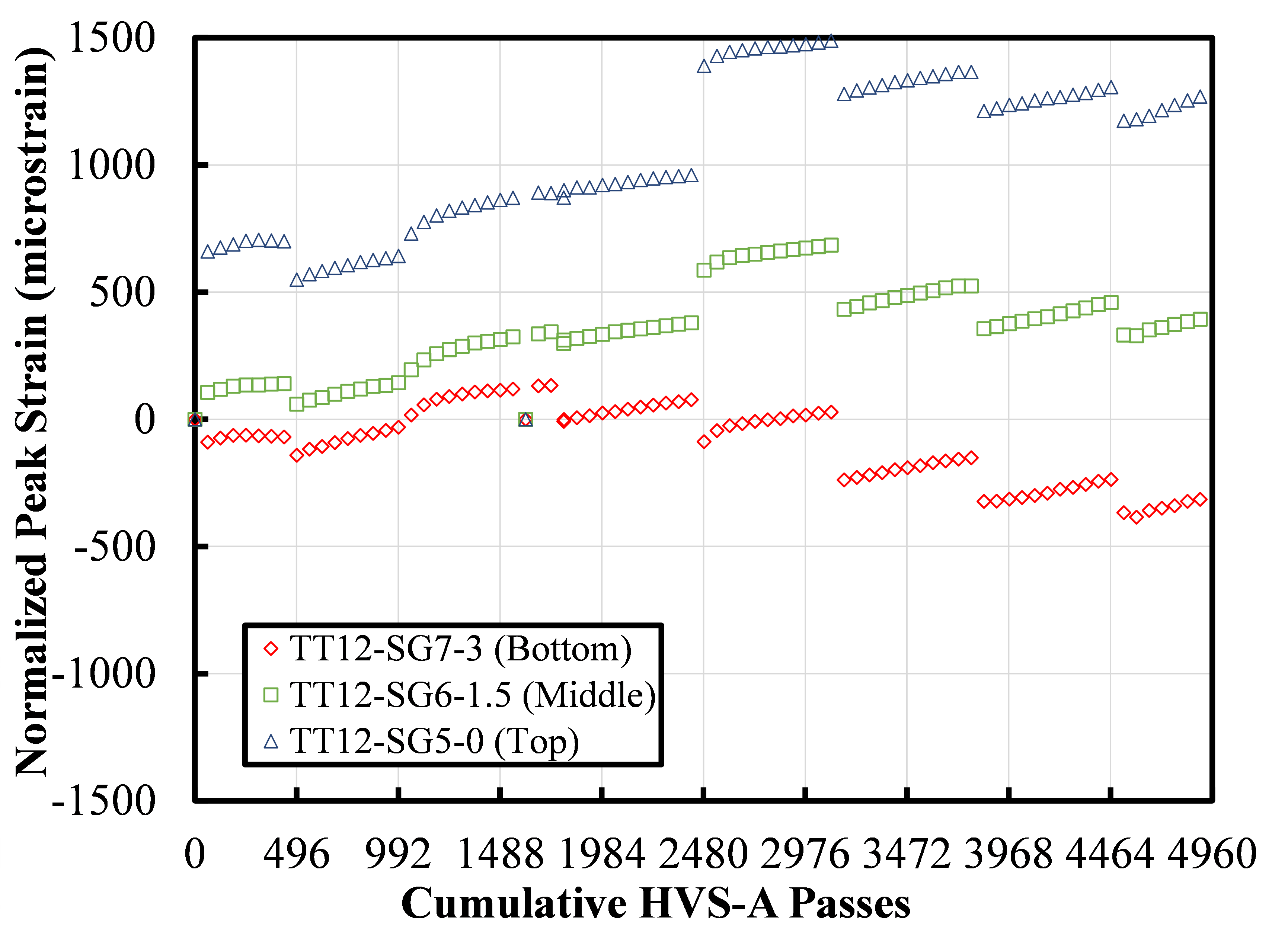
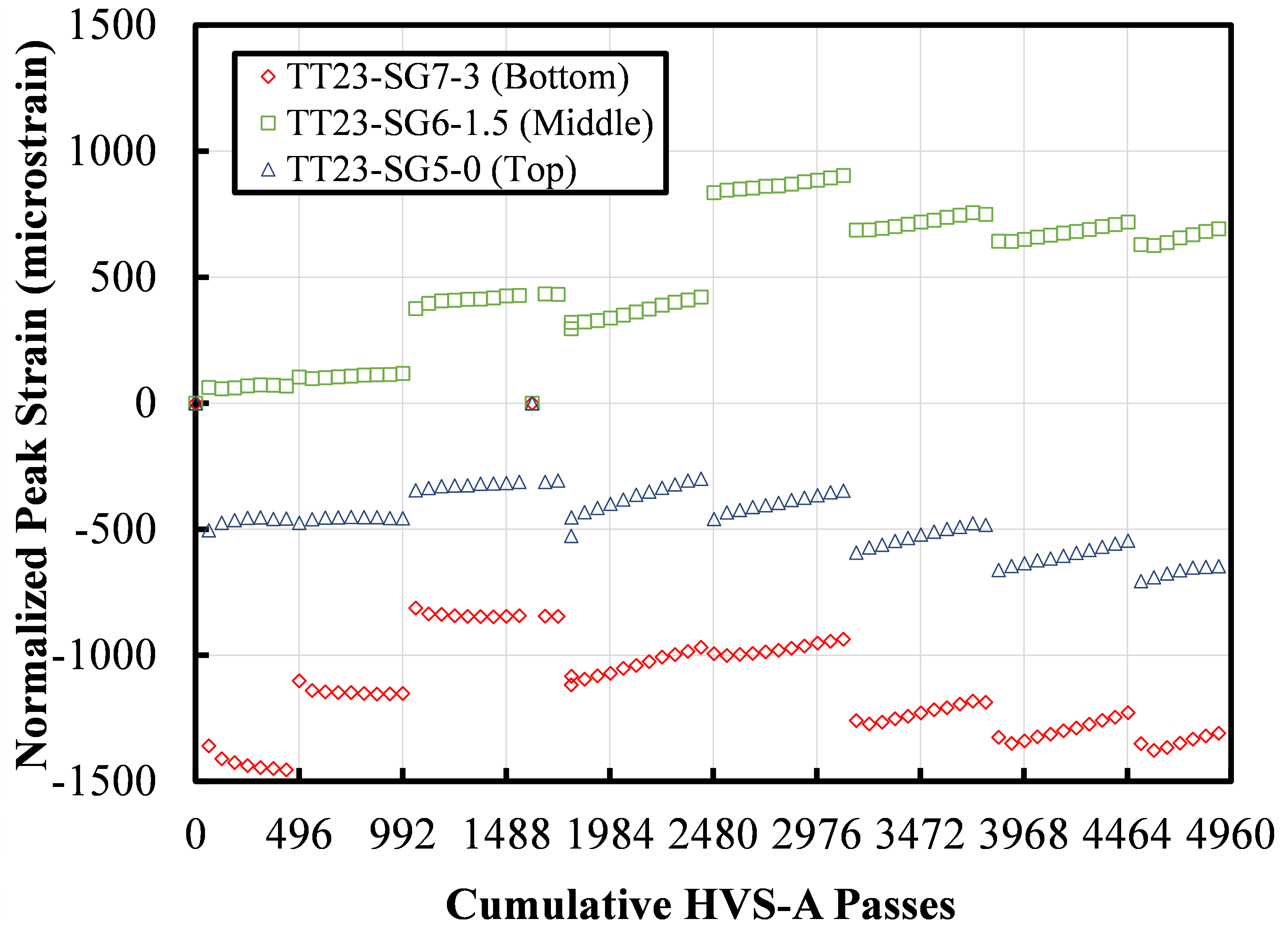
Representative surface strain gauge responses along RCOD-TT joint edge for (a) undoweled and (b) doweled sections
Temperature Distribution within Pavement Structure
Due to the relationship between joint displacement and temperature, it is also important to investigate the temperature distribution throughout the depth of the entire pavement structure. 13 March 2022 was selected because this day had experienced the lowest ambient throughout the trafficking period.
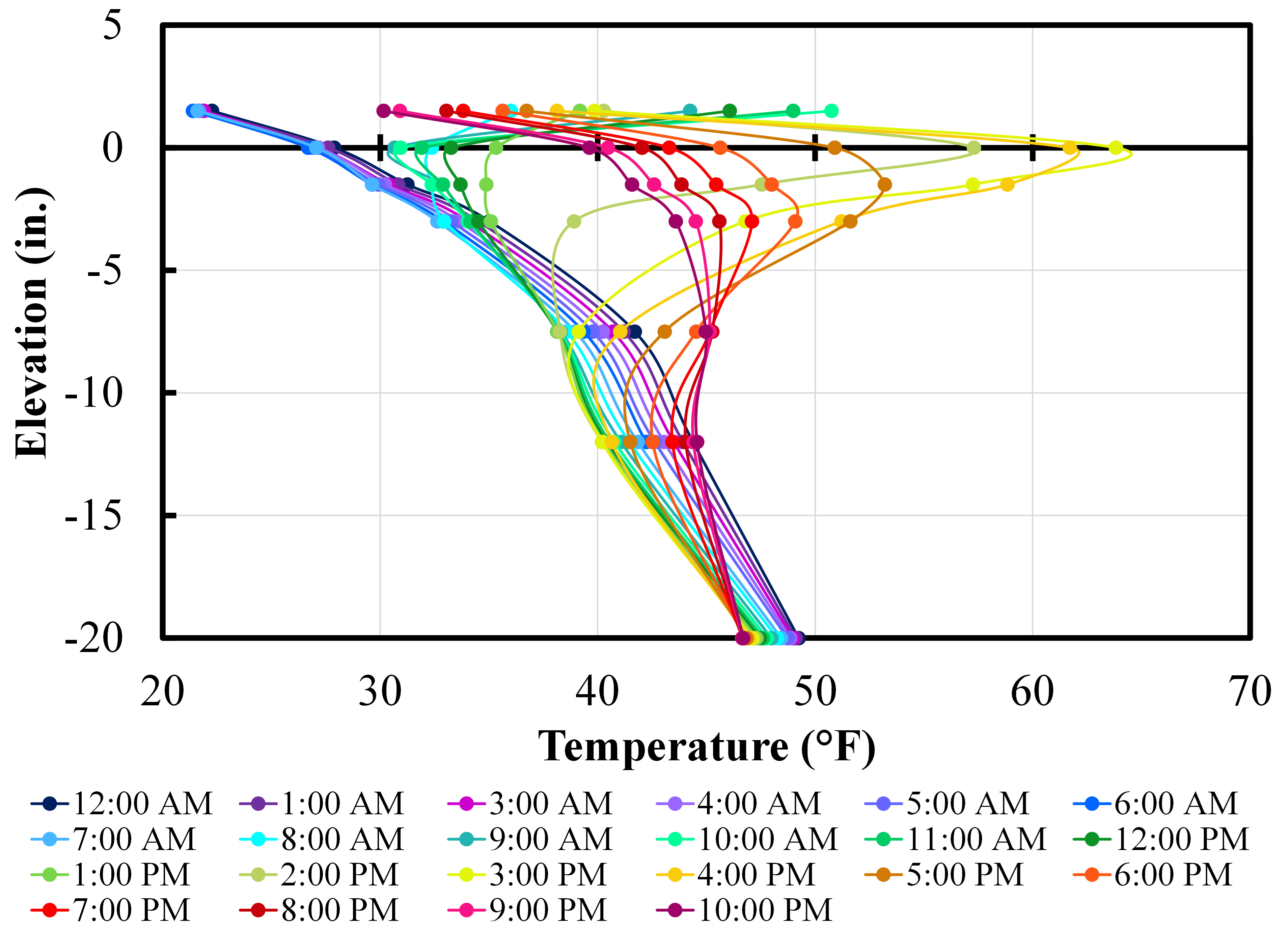
Daily temperature distribution with pavement depth for March 13, 2022.
The ambient temperature increases throughout the day along with the temperatures recorded in the pavement sublayers. Specifically, the peak ambient temperature recorded on this day was 50.8°F at 10:00AM. The lowest ambient temperature was recorded at 6:00 AM with an ambient temperature of 21.4°F. After the sun rose and the ambient temperature was higher than the surface (between 8:00AM to 1:00PM). Once the pavement was warmed by the sun, the surface temperature of the HMA overlay was higher than the ambient temperature which continued after sunset. The surface of the pavement retained the higher temperatures after the ambient temperature decreased. The peak temperature recorded in the HMA overlay was 63.8°F (located at the surface of the HMA overlay). The lowest temperature recorded in the HMA overlay was 26.7°F (located at the surface of the HMA overlay). Based on the temperatures in the HMA overlay, the pavement structure experienced larger temperature changes with a daily temperature change of 37.1°F compared to ambient temperature (daily temperature change of 29.4°F). At greater pavement depths, the temperature converged to approximately 47.7°F, which was expected as the daily thermal changes were not extreme or long enough to have an impact at the greater pavement depths.